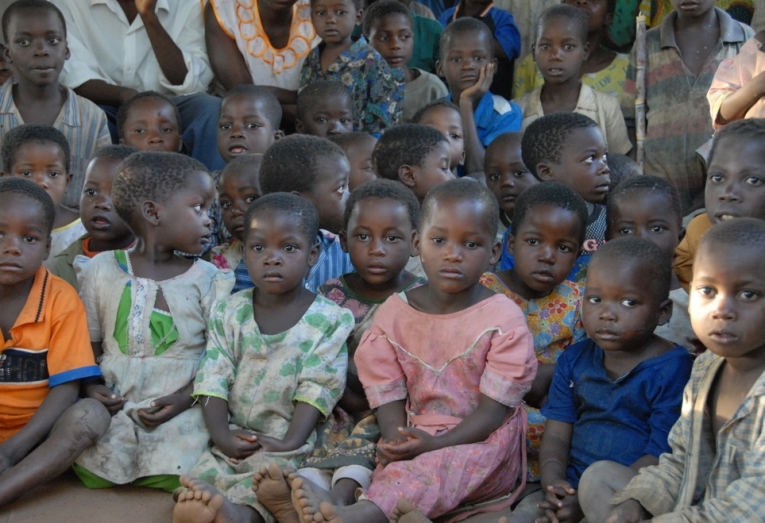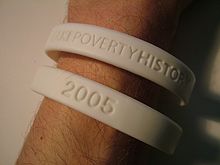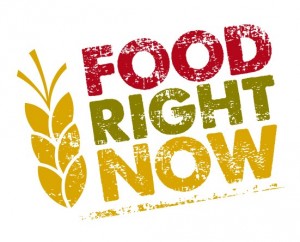 We here in the first world take our coffee, bananas, jeans and sneakers for granted, but there are many people in other countries that are not so lucky. Every day, tens of thousands of people in various Asian, African and South American countries – men, women and even children – work themselves to the bone in nearly unbearable conditions for pennies so we can continue to enjoy those things. However, there are many people in this world who feel that everyone deserves decent wages and working conditions, regardless of where they live, and these people have created Fair Trade Day.
We here in the first world take our coffee, bananas, jeans and sneakers for granted, but there are many people in other countries that are not so lucky. Every day, tens of thousands of people in various Asian, African and South American countries – men, women and even children – work themselves to the bone in nearly unbearable conditions for pennies so we can continue to enjoy those things. However, there are many people in this world who feel that everyone deserves decent wages and working conditions, regardless of where they live, and these people have created Fair Trade Day.
Fair Trade Day is a global event that aims to draw attention to the objectives and achievements of the Fair Trade movement. The Fair Trade movement campaigns to improve the lives of workers and small producers, especially those within developing economies, by asserting their rights and raising their visibility within international trade. The movement invites consumers to participate in its campaign by choosing Fair Trade alternatives to existing products.
The History of Fair Trade Day
World Fair Trade Day was created by the the World Fair Trade Organization (WFTO) in 2004, though the WFTO itself came into existence 15 years earlier, in 1989. WFTO is a global association of 324 organizations in over 70 countries, and Fair Trade Day takes place on the second Saturday of May of each year, and it is an inclusive worldwide festival of events celebrating Fair Trade as a tangible contribution to the fight against poverty and exploitation, climate change and the economic crisis that has the greatest impact on the world’s most vulnerable populations.
 Children orphaned by AIDS are just a fraction of the problem, as millions more have been made vulnerable. Behind the statistics are millions of stories of human suffering. The AIDS crisis has a catastrophic impact on households and communities – deepening poverty and exacerbating hardships. More than 95 percent of children affected by AIDS, including orphans, continue to live with their extended families. However, these families are increasingly overwhelmed by poverty and struggle to protect and raise the children in their care.
Children orphaned by AIDS are just a fraction of the problem, as millions more have been made vulnerable. Behind the statistics are millions of stories of human suffering. The AIDS crisis has a catastrophic impact on households and communities – deepening poverty and exacerbating hardships. More than 95 percent of children affected by AIDS, including orphans, continue to live with their extended families. However, these families are increasingly overwhelmed by poverty and struggle to protect and raise the children in their care. Millions of people all over the world suffer from Asthma, and if you’ve ever met one who suffers from it then you’re familiar with the pssst psst sound of the inhalers that make a relatively normal day to day life possible for them. World Asthma Day is dedicated to raising awareness about this pernicious disease and seeks to bring awareness and advanced asthma care to sufferers throughout the world.
Millions of people all over the world suffer from Asthma, and if you’ve ever met one who suffers from it then you’re familiar with the pssst psst sound of the inhalers that make a relatively normal day to day life possible for them. World Asthma Day is dedicated to raising awareness about this pernicious disease and seeks to bring awareness and advanced asthma care to sufferers throughout the world.
 « On this World Population Day, I urge all Governments, businesses and civil society to support and invest in teenage girls. Everyone deserves the benefits of economic growth and social progress. Let us work together to ensure a life of security, dignity and opportunity for all. »
« On this World Population Day, I urge all Governments, businesses and civil society to support and invest in teenage girls. Everyone deserves the benefits of economic growth and social progress. Let us work together to ensure a life of security, dignity and opportunity for all. »  A l’occasion de la journée mondiale du bandeau blanc, vendredi 1er juillet, la coalition « 2005 : plus d’excuses ! » vous invite à porter un bracelet blanc à votre poignet la semaine précédent le 1er juillet et le jour même, en signe de soutien à l’action mondiale contre la pauvreté. Le Secours Catholique et le Comité Catholique contre la Faim et pour le Développement (CCFD) sont membres de l’opération.
A l’occasion de la journée mondiale du bandeau blanc, vendredi 1er juillet, la coalition « 2005 : plus d’excuses ! » vous invite à porter un bracelet blanc à votre poignet la semaine précédent le 1er juillet et le jour même, en signe de soutien à l’action mondiale contre la pauvreté. Le Secours Catholique et le Comité Catholique contre la Faim et pour le Développement (CCFD) sont membres de l’opération.
 Fifth World AIDS Orphans Day: Tens of “Circles of Hope” are created worldwide by young people to remind governments of the objectives set in 2001, when they signed the United Nations Declaration of Commitment on HIV/AIDS.
Fifth World AIDS Orphans Day: Tens of “Circles of Hope” are created worldwide by young people to remind governments of the objectives set in 2001, when they signed the United Nations Declaration of Commitment on HIV/AIDS.